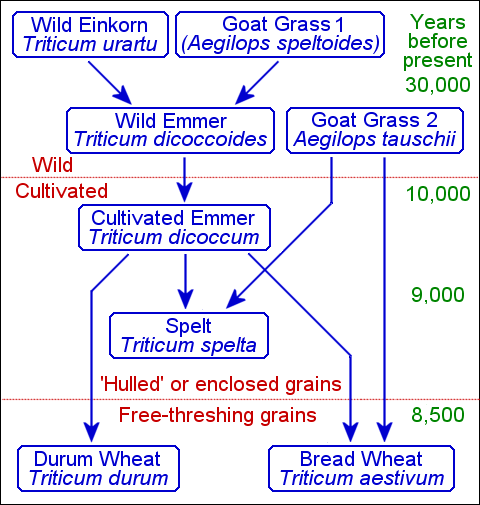 |
|||
 |
Evolution of Wheat | ||
 |
The diagram shows the Evolution of Wheat, from the prehistoric Stone Age grasses to Spelt, Durum Wheat and Bread Wheat. Wild Einkorn hybridised with a Goat Grass at least 30,000 years ago to create Wild Emmer. About 10,000 years ago, when this began to be cultivated by hunter-gatherers for food, their subconscious plant selection slowly created Cultivated Emmer with larger grains. Later, as this became more widely cultivated, it spread into the natural habitat of another wild Goat Grass. Random hybridisations between the Cultivated Emmer and this second Goat Grass produced some early forms of hard shelled Spelt. Another similar hybridisation occurred later but with a mutation that changed the ears from having the grain enclosed within a hard shell to an ear that would release the grain more easily. The hunter-gatherers would naturally have selected this easier threshing form to collect so that, assisted by this human selection, it slowly evolved into free-threshing Bread Wheat. Over time, Emmer Wheat also mutated and evolved to create Durum Wheat, now used for making a wide range of products such as macaroni, spaghetti and lasagna. |
||
| Click on a box for more information | |||
| Information on the Wheat Genome shows the origin of the
chromosomes and the pollen and ovules involved in the evolution of tetraploid and hexaploid wheats from the diploid Wild Einkorn and Goat Grasses. |
|||